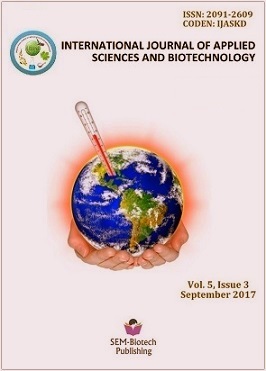The Intensity-Curvature of Human Brain Vessels Detected with Magnetic Resonance Imaging
DOI:
https://doi.org/10.3126/ijasbt.v5i3.18271Keywords:
Magnetic resonance imaging, inverse Fourier transformation procedure, intensity-curvature term, k-space.Abstract
The intensity-curvature term is the concept at the root foundation of this paper. The concept entails the multiplication between the value of the image pixel intensity and the value of the classic-curvature (CC(x, y)). The CC(x, y) is the sum of all of the second order partial derivatives of the model polynomial function fitted to the image pixel. The intensity-curvature term (ICT) before interpolation E0(x, y) is defined as the antiderivative of the product between the pixel intensity and the classic-curvature calculated at the origin of the pixel coordinate system (CC(0, 0)). The intensity-curvature term (ICT) after interpolation EIN(x, y) is defined as the antiderivative of the product between the signal re-sampled by the model polynomial function at the intra-pixel location (x, y) and the classic-curvature. The intensity-curvature functional (ICF) is defined as the ratio between E0(x, y) and EIN(x, y). When the ICF is almost equal to the numerical value of one (‘1’), E0(x, y) and EIN(x, y) are two additional domains (images) where to study the image from which they are calculated. The ICTs presented in this paper are able to highlight the human brain vessels detected with Magnetic Resonance Imaging (MRI), through a signal processing technique called inverse Fourier transformation procedure. The real and imaginary parts of the k-space of the ICT are subtracted from the real and imaginary parts of the k-space of the MRI signal. The resulting k-space is inverse Fourier transformed, and the human brain vessels are highlighted.
Int. J. Appl. Sci. Biotechnol. Vol 5(3): 326-335




